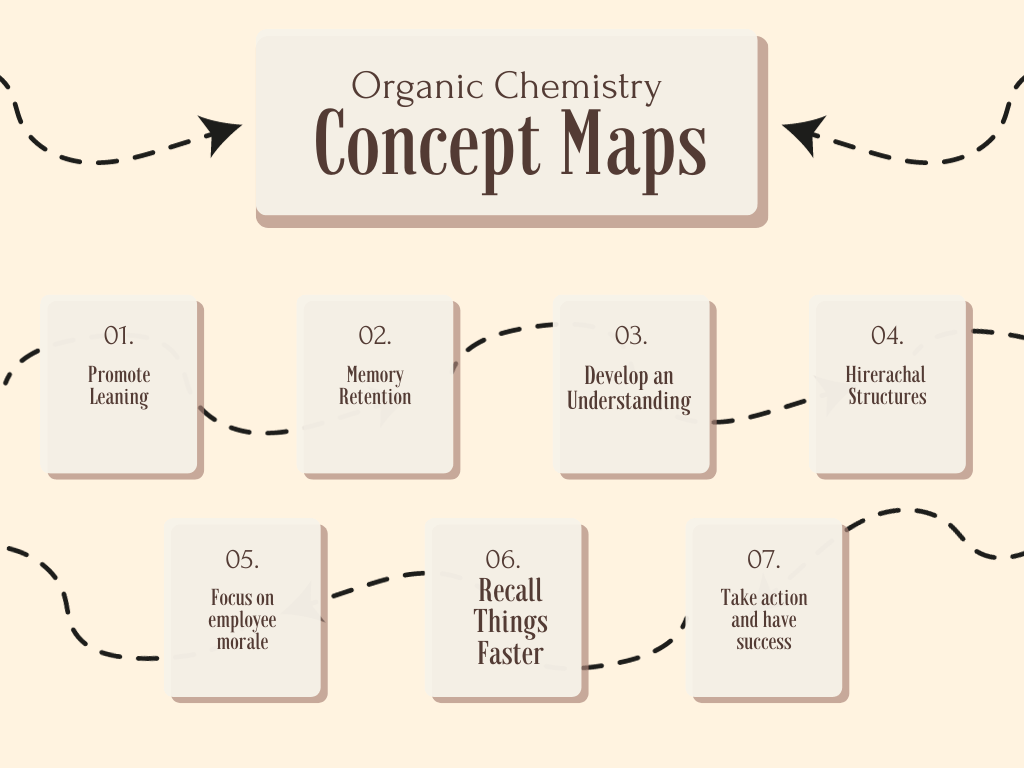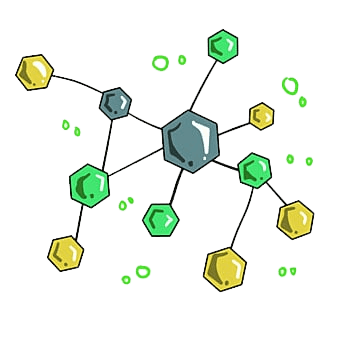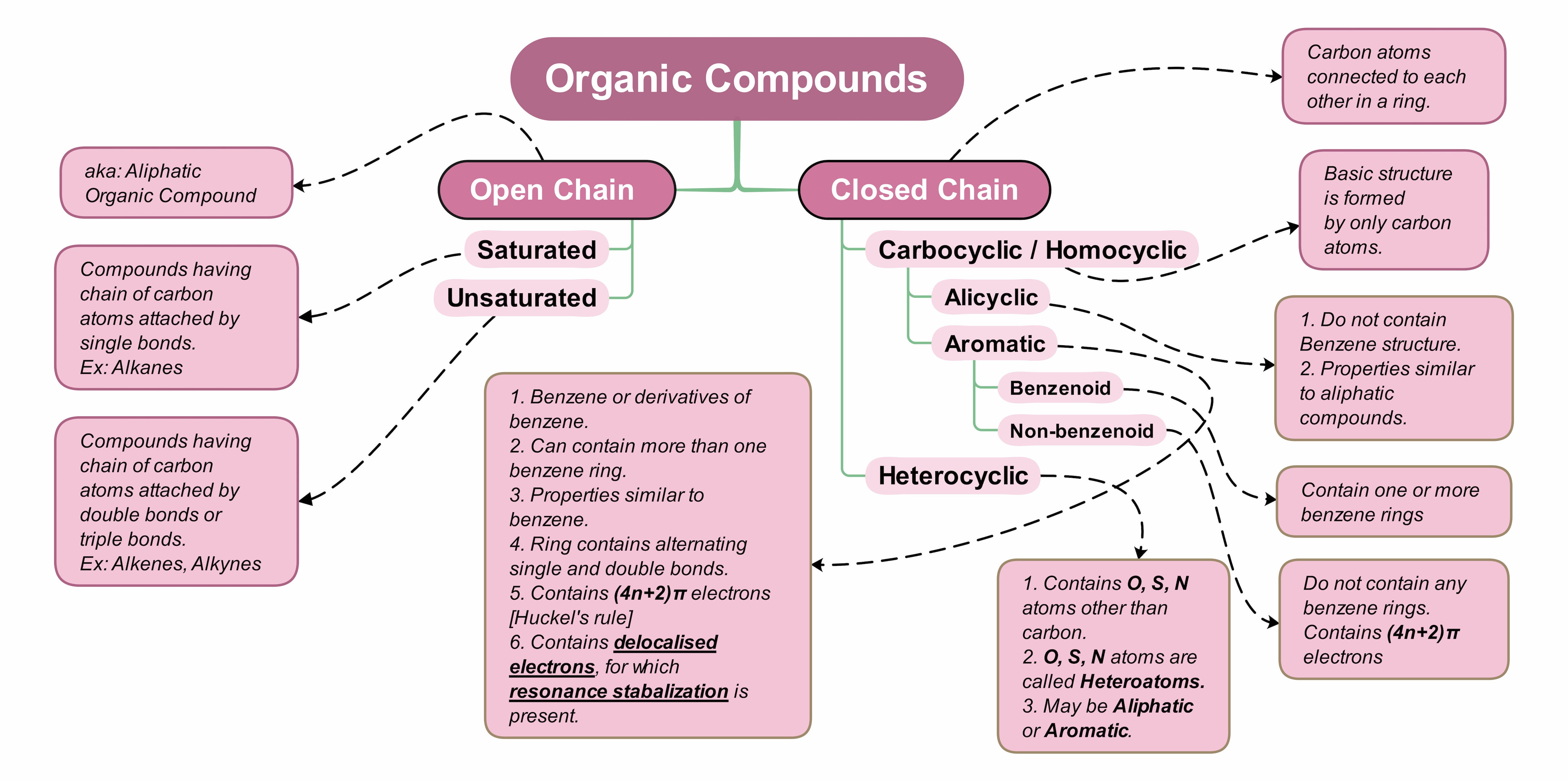
Visual learning is incomparable in grasping a complex concept. Various studies interpret that almost 75% of the data a human brain processes is visual, especially in the form of maps. Organic chemistry is no different. When displayed in hierarchal structures, organic compounds are easily understood.
This article offers valuable insight into how students and educators can beneficially integrate concept maps into learning. We will discuss how the concept maps’ hierarchical information structures are used to comprehend organic compounds' chemical characteristics and divisions.
So, let us explore some organic compound concept map examples from the EdrawMind gallery.
In this article
What Are Organic Compounds
For novices, organic compounds are chemical compounds that contain hydrogen and carbon. Traditionally, the term “organic” implied that these compounds were naturally derived from living things. However, in 1828, the German chemist Friedrich Wohler reported urea synthesis.
Since then, organic compounds have evolved to include all carbon-related natural and synthetic compounds. Some excluded compounds include carbonates, simple oxides, and cyanides. Today, organic compounds are used in pharmaceuticals, fabrics, and perfume industries.
Organic compounds are divided into two groups: hydrocarbons and functional organic compounds.
1. Hydrocarbon Organic Compounds
Hydrocarbons are the only compounds with Carbon and Hydrogen atoms. These atoms are further categorized as;
- Alkanes are compounds with only single carbon bonds.
- Alkenes are compounds with double carbon bonds.
- Alkynes are compounds with triple carbon bonds.
- Arenes are compounds with cyclic ring carbon bonds called benzene.
2. Functional Organic Compounds
Functional compounds are the ones that have one hydrogen atom replaced in a molecule. It can be single atoms like F, Br, I, etc, or a combination of CO, SH, and NH2 atoms. Functional groups are used in organic synthesis as they influence the reactivity of the organic groups. These compounds are widely popular in pharmaceuticals and medicinal products.
Benefits of Using Organic Compounds Concept Map
Concept maps are a must-have to understand organic compounds and their chemistry. Let us discuss why.
1. Note-Taking Substitute
The chemistry exam is already stressful, and having to read never-ending notes makes it nerve-wracking. But, concept maps make it easier for students to go through organic compound's factual information. Processing infographics in these maps aids you in saving time for important reactions.
2. Easily Understandable
Most of us overestimate our memory retention. It is natural to feel like you have understood everything discussed in a lecture. But the real test starts when you reminisce about the contents of the lecture. This is where concept maps come in handy. The ease of creation allows you to make notes while the lecturer is speaking.
3. Relationship Between Ideas
Unlike spider maps, concept maps have cross-linkages and several parent-daughter subsets. This helps students grasp the relationship between categories of the open chain, closed chain, aliphatic, and ring organic compounds. It helps them visualize and understand sub-categorical structures in less than usual time.
4. Organize Information Hierarchically
Most concept maps follow a top-to-bottom hierarchy, making it easy to comprehend information. This way, understanding organic chemical reactions and their hierarchy is a matter of minutes.
Organic Compounds Concept Map Templates
A concept map in organic chemistry is an excellent substitute to reinforce reactions and chemical attributes of individual organic compound categories. Let us check some organic compound concept maps from the EdrawMind template gallery.
1. Types of Organic Compounds
In organic chemistry, compounds dealing with carbon and hydrogen bonds are known as organic compounds. These chain compounds integrate carbon atoms and form the basis of synthetic reactions. Having a thorough base of organic compounds is the first step to entering organic chemistry.
This type of organic compound concept map is a starter’s introduction to organic chemistry. It uses a simple map structure to illustrate the divisions of Aliphatic and Ring compounds. A first look at this concept map depicts four-cyclic categories of organic compounds. For this, it uses sub-branches and daughter strands.
The concept map emphasizes the role of each type of chain compound in order to build a foundation for the viewer. A good way to utilize this example is for primary science classes. The different colors to represent each category and easily understandable layout are suitable for kids. Educators can also print and display it on the science board.
2. Open and Closed Chain Organic Compounds
The open and closed chain map uses spider web relationship schema. It differentiates the two divisions of chained organic compounds using their reactive nature and chemical characteristics.
Having a quick look at the example suggests the two branches, open and closed chain, which are extended into categories. The map further branches off into separate boxes to depict their distinct characters. For instance, closed chain > alicyclic > does not contain a benzene structure visualizes one relationship within a broader scheme.
Therefore, structuring your understanding of these chain compounds is easier with this web-like concept map. It illustrates cross-links and several parent-daughter categories like saturated and unsaturated compounds. Therefore, comparing and contrasting the two is simpler.
Simply put, this organic compounds concept map is an excellent way to make notes and conduct a learning session. You can also add information and customize extended relationships within this template.
Conclusion
Though organic chemistry only deals with a few elements, it can get challenging for its multiple categories and divisions. This is where concept maps come as a handy tool. Concept map examples promote a logical understanding of organic chemistry, whether it is a chemistry exam or a presentation. These maps have an established hierarchy and visual aid for viewers to grasp factual information in a short time.
Wondershare EdrawMind has a massive template gallery with similar organic chemistry concept maps. It allows changing their layout colors and adding information. Visit the gallery, find a suitable organic chemistry concept map, and start editing. Plus, its simple interface makes navigating the software even easier. So, give it a shot, and you might like the learning experience.





 below.
below.  below.
below. 
